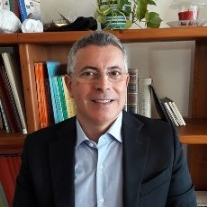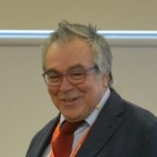Topic Editors



The Extended Technological Platform Based on Optics and Microwaves: Conventional and Hybrid Solutions

Topic Information
Dear Colleagues,
The topic covers a wide range of research areas mainly concerning the design and fabrication techniques of optical and photonics devices and systems made of dielectric materials. In addition, it includes the newer research areas of blending optics and microwaves. A related conference is D-Photon 2023: Dielectric Photonic Devices & Systems Beyond Visible Merging Optics and Microwave, Bari July 11-13, 2023 (https://d-photon2023.fbk.eu/home).
The beyond-visible spectral range is enabling various promising applications in various fields. Over the past decade, technology in the fields of dielectric photonics, integrated optics, and optical fiber-based systems has significantly advanced. A number of optical devices, such as microwave devices and antennas, are nowadays exploitable in practical contests, for example, in Internet of Things (IoT), Future Telecommunication, 4.0 Industry, Precise Agriculture, and Biomedicine contexts, alongside others. In this scenario, the spontaneous merging of optics, dielectric material technologies, and microwaves, in areas such as microwave photonics, radio over fiber, and fiber wireless (FiWi) has extended and unified the interests of researchers, engineers, and scientists from these various fields.
Novel activated materials have been ad hoc synthesized for the construction of high-performance optical sources, in both conventional and exotic wavelength ranges, by embedding rare earth ions into different host materials (glass oxides, fluorides, chalcogenides, glass ceramics, crystalline, organics, etc.) or by including rare earth ions in molecular complexes. These results have produced more efficient communication systems and powerful industrial processing tools. In addition, novel optical materials such as graphene promise novel applications through innovative optical circuitries. The availability of low-cost, commercial, tunable optical sources, such as quantum cascade lasers, and the fabrication of resonant microcavities and microstructured fibers are paving the way for novel chemical and biological sensing set-ups. Further improvements in sensor performance can be obtained by covering the dielectric structure with a thin metal layer, exploiting plasmon propagation or resonance. These applications are nowadays feasible in the fields of high brilliance light sources, amplifiers, fluorescent probes, luminescent labels, frequency converters, switches, detectors, etc., covering areas ranging from telecommunication to optical remote sensing and earth atmosphere monitoring, and from medical diagnosis and therapy, e.g laser surgery, to material processing.
The Topic aims to collect studies in the fields of optics, photonics, and microwave, giving significant examples of the state-of-the-art, and illustrating the research perspectives based on the integration of different technologies.
Prof. Dr. Francesco Prudenzano
Prof. Dr. Antonella D’Orazio
Dr. Maurizio Ferrari
Topic Editors
Keywords
- novel dielectric materials for NIR, Mid-IR, THz devices
- rare-earth-based materials and devices
- NIR and Mid-IR coherent light sources
- supercontinuum generation
- PBG devices, metallo-dielectric photonic crystals, plasmonics
- microresonators, integrated optics
- components and systems for biomedicine, and interaction of light with biological tissues, optical diagnostics and therapy
- microwave photonics applications and radio-over-fibre transmission
- optical 5G
- optical antennas
- THz and millimeter wave components and systems
- integration of microwave and optics
- innovative solutions for antennas and microwave devices
- metamaterials for microwave and optical applications
- aerospace photonics
Participating Journals
| Journal Name | Impact Factor | CiteScore | Launched Year | First Decision (median) | APC | |
|---|---|---|---|---|---|---|

Applied Sciences
|
2.7 | 4.5 | 2011 | 16.9 Days | CHF 2400 | Submit |

Electronics
|
2.9 | 4.7 | 2012 | 15.6 Days | CHF 2400 | Submit |

Optics
|
- | - | 2020 | 17.7 Days | CHF 1200 | Submit |

Photonics
|
2.4 | 2.3 | 2014 | 15.5 Days | CHF 2400 | Submit |

Technologies
|
3.6 | 5.5 | 2013 | 19.7 Days | CHF 1600 | Submit |

MDPI Topics is cooperating with Preprints.org and has built a direct connection between MDPI journals and Preprints.org. Authors are encouraged to enjoy the benefits by posting a preprint at Preprints.org prior to publication:
- Immediately share your ideas ahead of publication and establish your research priority;
- Protect your idea from being stolen with this time-stamped preprint article;
- Enhance the exposure and impact of your research;
- Receive feedback from your peers in advance;
- Have it indexed in Web of Science (Preprint Citation Index), Google Scholar, Crossref, SHARE, PrePubMed, Scilit and Europe PMC.

